Should City Buy 30th Street Railroad Line?
Bauman pushes idea. Move would clear way for bike trail and commuter rail line.
The City of Milwaukee has big dreams for a lightly-used rail line that bisects the middle of the city.
The 6.7-mile 30th Street Corridor could be used for a paved trail for cyclists and pedestrians. The rail line itself could also be used as part of a larger commuter rail system. It’s a grade-separated corridor that runs from the Menomonee Valley north to W. Hampton Ave.
“We keep saying that, except it’s someone else’s property,” said Alderman Robert Bauman at a meeting Wednesday of the Public Works Committee. “I think the first thing you would do is get control of the property.”
The alderman introduced a file that requests the city administration to begin negotiations with Watco, the line’s current owner, about purchasing the corridor. “With the exception that they would continue to have access for freight service,” he said.
“I’ve been looking at this right of way for only about 40 years and seeing its great potential for development both for a bike trail and a rail facility,” said the alderman, who previously held multiple jobs in the railroad industry.
But will Watco sell? “Because it is a recent acquisition of theirs… they are hesitant to sell it,” said Redevelopment Authority of the City of Milwaukee project manager Benjamin Timm. The railroad company, which purchased Wisconsin and Southern Railroad in 2011, acquired the line last year from Canadian Pacific.
“Yes,” said Timm.
What about cleaning up illegal dumping? “Yes,” said Timm, but he said the railroad has approached the city about support.
The corridor is valuable, from a transportation perspective, because it is disconnected from the street grid. Approximately one mile near its southern end is below grade, with city-owned bridges passing above (creating the illegal dumping opportunity). To the north streets slope down to pass under the corridor, with railroad-owned bridges above.
Those railroad-owned bridges include the large bridge over the intersection of W. Fond du Lac Ave. and W. Locust St. The city recently paid artist Tia Richardson to paint a mural on an embankment near the bridge, and officials said they are exploring other options to brighten the dark intersection.
The bridges are all wider than the current single-track line. According to a 2020 city feasibility study, the corridor could accommodate both a trail and rail line.
“Be sure to emphasize to Watco we have no intention of disrupting their operation,” said Bauman. “The intent is not to kick them out. The intent is to offload some huge cost liabilities they may face in the future.”
The railroad line was initially created by the Milwaukee Road more than a century ago. It eventually became a heavily-used industrial line, with A.O. Smith (later Tower Automotive) being the largest employer on the line, with a yard developed next to its buildings at W. Capitol Dr.
Today, the portion south of W. Highland Ave., serving the Molson Coors campus, is owned by Canadian Pacific and connects to the railroad’s international network. North of W. Hampton Ave. the corridor is owned by the State of Wisconsin and leased to Watco. It connects with Canadian National and Union Pacific‘s networks.
The city’s Century City Business Park is on the line and its tenants, PAK Technologies and Talgo, are the largest users on the Watco-owned portion of the corridor. Timm said the city meets regularly with the railroad.
The committee unanimously endorsed Bauman’s request with Timm saying officials would discuss the matter with Watco. Administration officials are to report back by February 1.
And whether or not the city buys the corridor, it is already planning to access it. A proposed apartment complex at 3100 W. Meinecke Ave. would include an access ramp. The Community Within The Corridor development at W. Center St. would have direct access. Green infrastructure improvements near Century City would facilitate a connection to an east-west trail network.
Public ownership of an active freight rail line is not unprecedented. The City of Austin purchased a 162-mile railroad outright in 1986. It now operates a commuter rail line on the corridor and leases the track to Watco for freight operations.
A full copy of the 2020 study can be found on Urban Milwaukee. Also, see our earlier coverage.
2020 Study Maps
If you think stories like this are important, become a member of Urban Milwaukee and help support real, independent journalism. Plus you get some cool added benefits.
More about the 30th Street Corridor Trail
- Transportation: 30th Street Corridor Trail Study Begins in May - Graham Kilmer - May 1st, 2025
- Milwaukee Wants To Buy 30th Street Line, Railroad Says No - Jeramey Jannene - Mar 18th, 2025
- Federal Grant Boosts Trail Connectivity Within Milwaukee’s 30th Street Corridor: A Model for Collaborative Community Development - Near West Side Partners, Inc. - Jan 13th, 2025
- Consultant Sought To Design 30th Street Corridor Trail - Jeramey Jannene - Jan 3rd, 2025
- Trail Extension Will Link Downtown With Planned 20th Street Trail - Jeramey Jannene - Dec 5th, 2024
- MKE County: Parks Finishes Trails Plan for Northwest Side - Graham Kilmer - Apr 5th, 2023
- Transportation: Should City Buy 30th Street Railroad Line? - Jeramey Jannene - Nov 10th, 2021
- Transportation: Study Released For 6.7-Mile 30th Street Trail - Jeramey Jannene - Jan 27th, 2021
Read more about 30th Street Corridor Trail here
Transportation
-
Congestion Pricing Cuts Air Pollution in New York City
 Dec 14th, 2025 by Jeff Wood
Dec 14th, 2025 by Jeff Wood
-
FTA Tells Milwaukee to Crack Down on Fare Evasion — Even Where Fares Don’t Exist
 Dec 12th, 2025 by Graham Kilmer
Dec 12th, 2025 by Graham Kilmer
-
Will GOGO’s Bus Service Ever Get Going?
 Dec 9th, 2025 by Jeramey Jannene
Dec 9th, 2025 by Jeramey Jannene


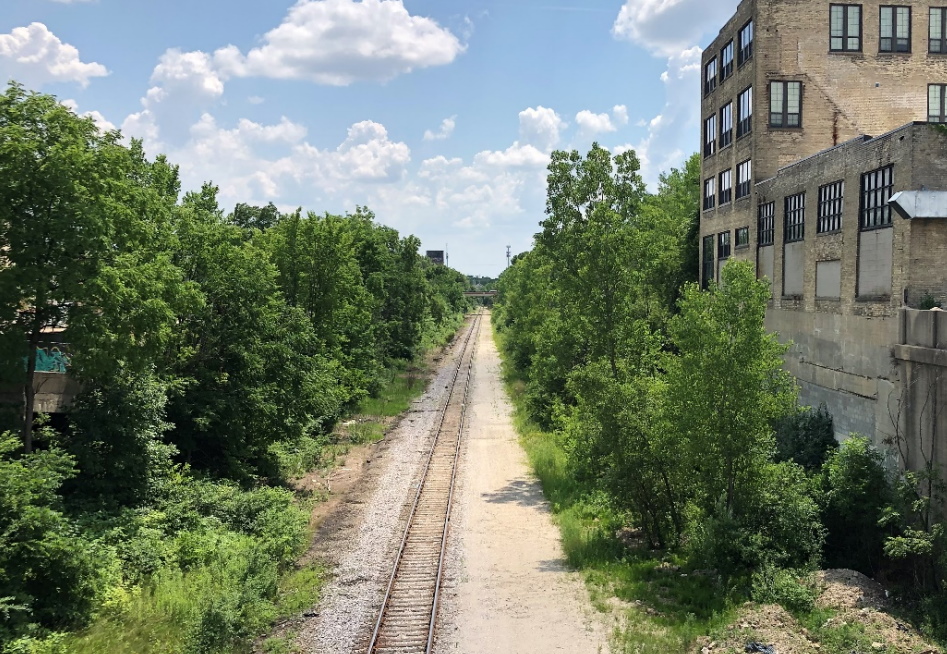
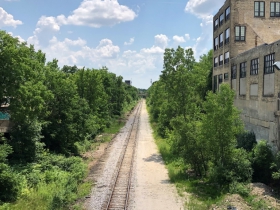
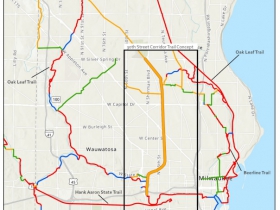
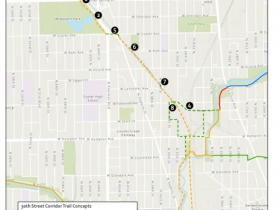
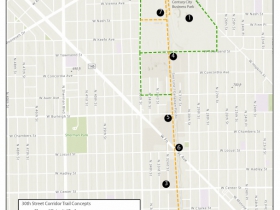
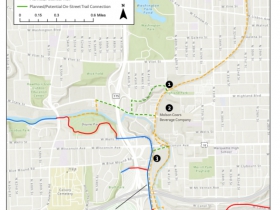




















Jeramey, this piece reminds me of the two companies that announced plans to develop commuter rail in Milwaukee back in 2018, Transit Innovations and Wisconsin Transit & Realty Group.
https://www.jsonline.com/story/news/2018/12/06/transit-firm-wants-put-commuter-trains-rail-lines-across-milwaukee/2226458002/
What struck me most about these proposals were how ambitious (unrealistic?) they were and that financing such a thing by developing the property close to proposed stations sounded pretty creative. They even said they believed they could get part of the project (from the airport to Intermodal Station) up and running for the 2020 DNC. (RIP.) Then…radio silence.
So now talk about this stretch of track being used for commuter rail, which was included in the 2018 proposals. And, you wrote about the Komatsu project including a commuter rail option as part of a revived KRM line. I believe that site is also part of the other two Milwaukee commuter rail proposals.
So, I wonder if there are developments afoot that may come to fruition sometime soon. There’s a lot of federal money being made available for projects like this.
Have you heard anything?
Polaris: There was consideration for commuter rail along this corridor but it was rejected in favor of some sort of rapid transit.
https://urbanmilwaukee.com/topic/north-south-transit-study/
I lived in Charlotte NC in 2007 when the first commuter rail line opened between the southern city limits and uptown Charlotte, a distance of nine miles. It was a huge success, exceeding five year ridership estimates by the second year. In 2018 the line was extended nine miles from uptown northeast to the University of North Carolina Charlotte campus, Again, a huge success. An ancillary result of the first line was the amount of new commercial and housing development along what prior was a somewhat depressed corridor. This is just what the 30th Street Industrial Corridor needs to connect a community needing family supporting jobs to businesses looking for a stable workforce.